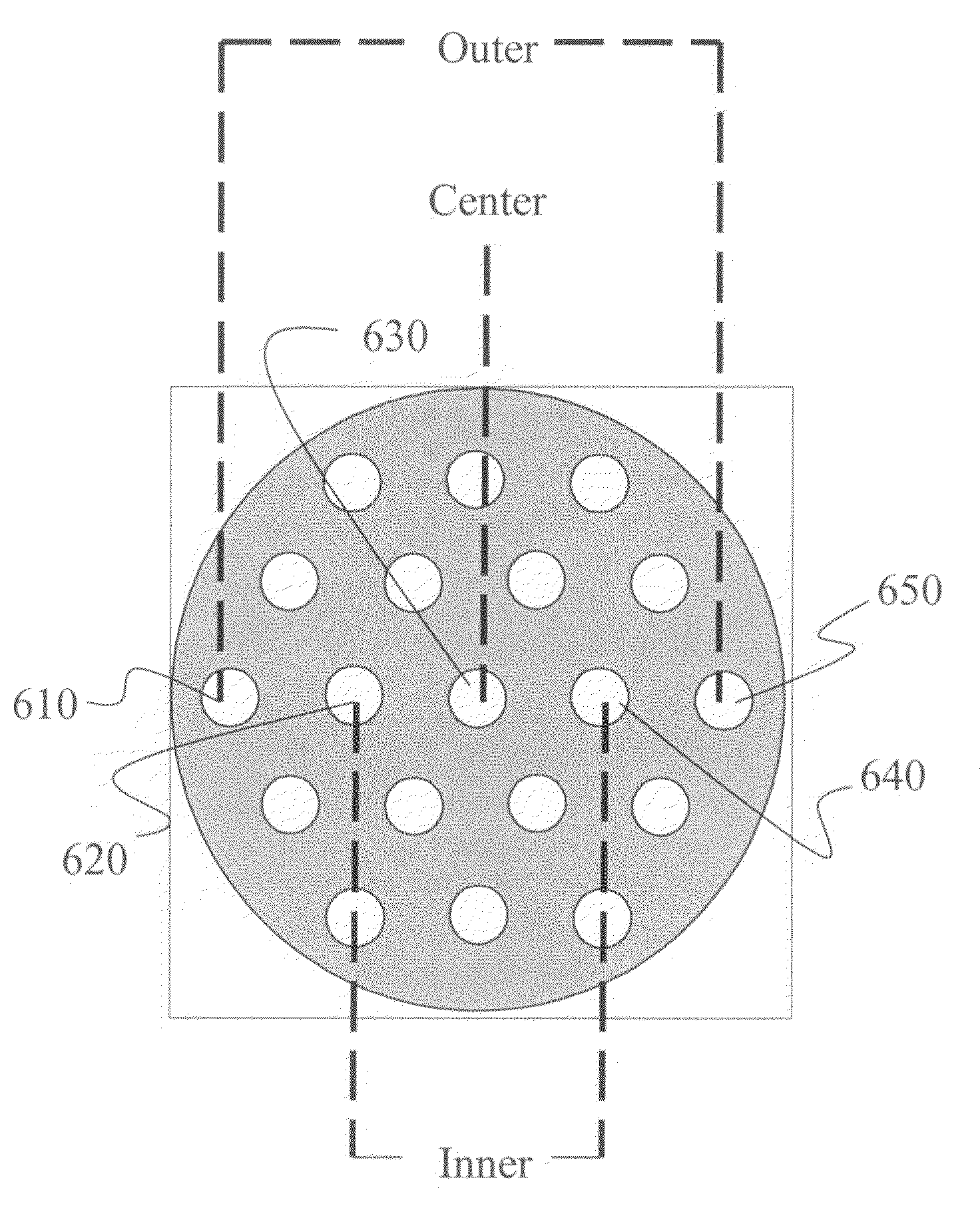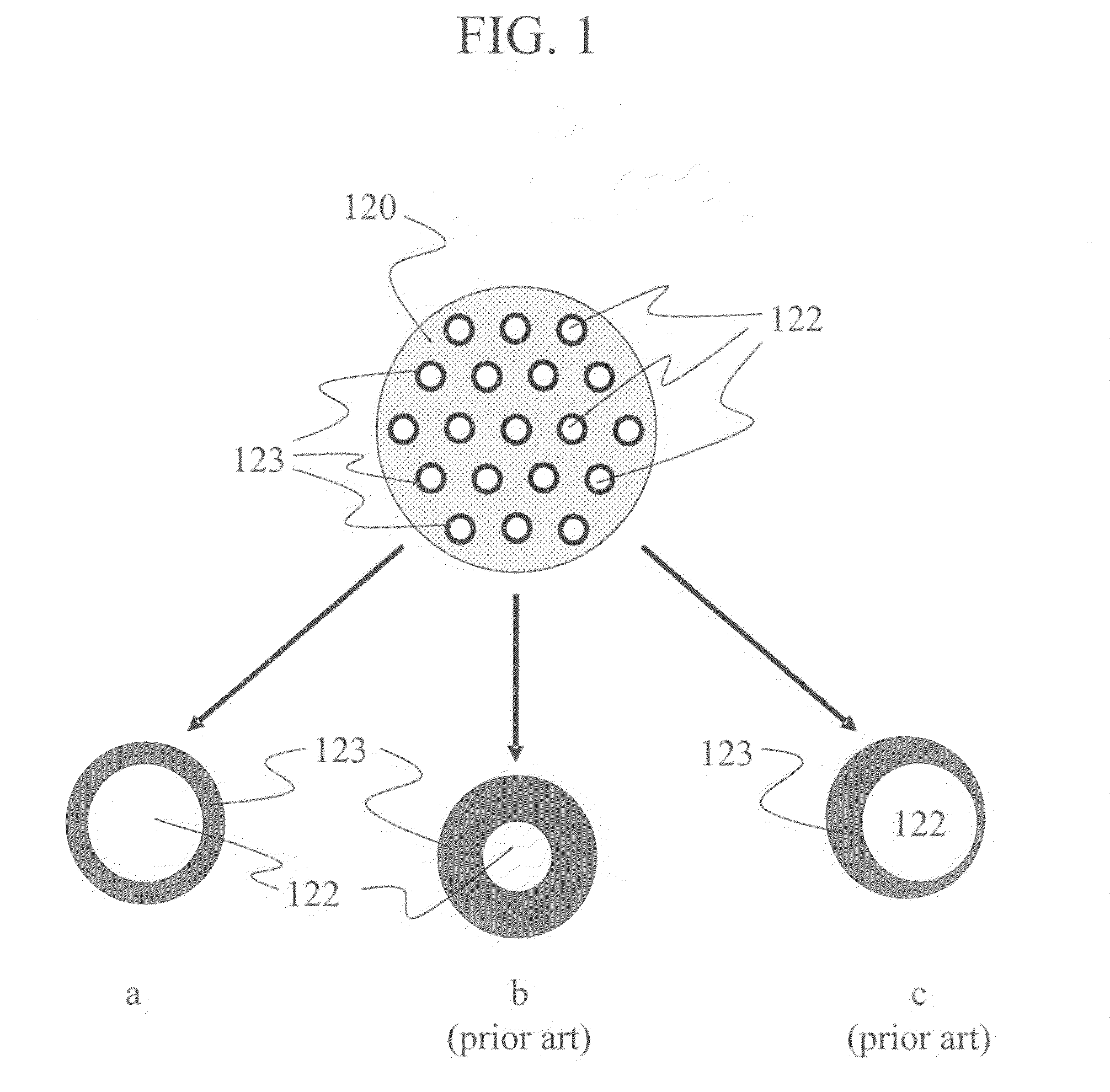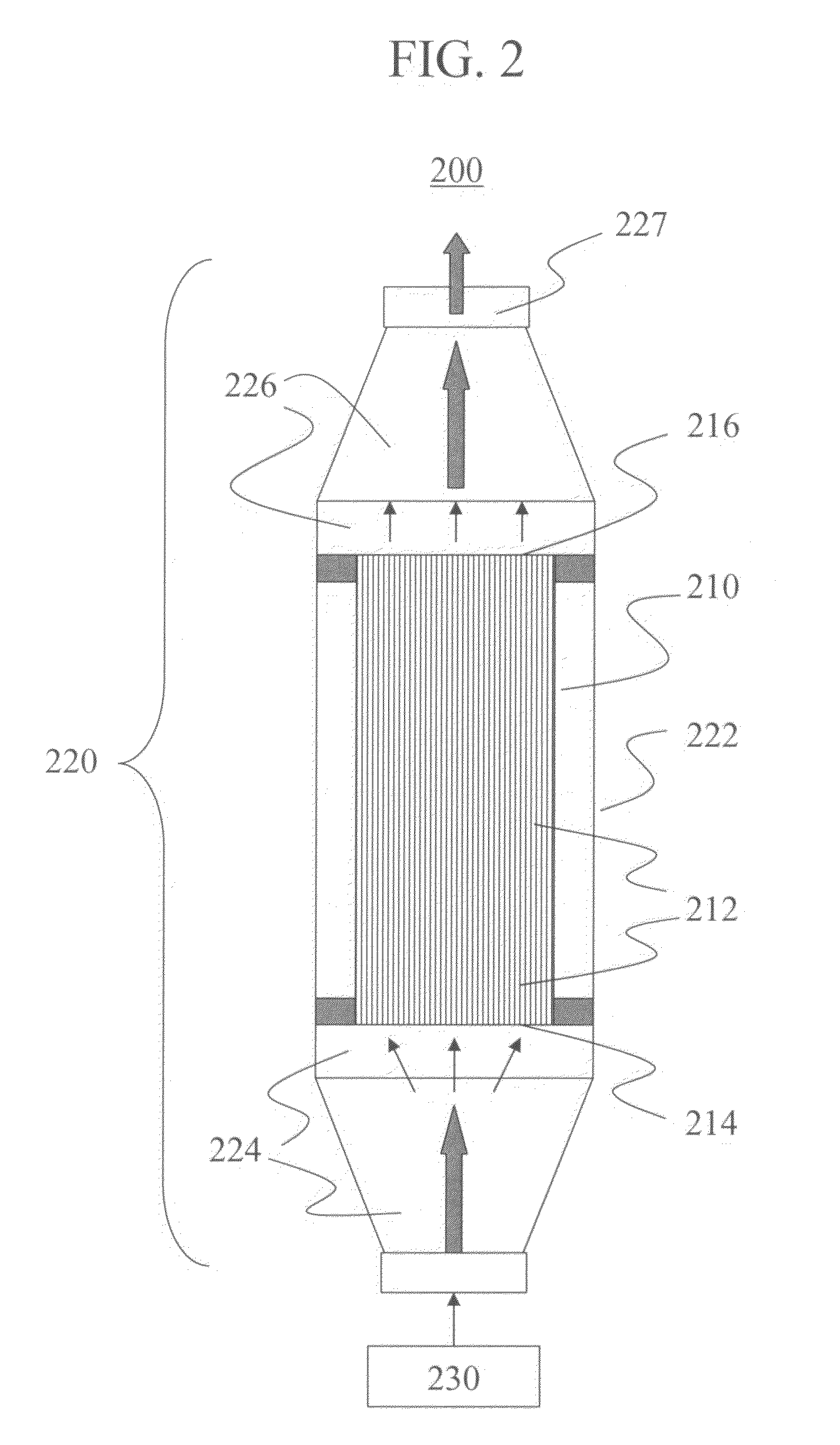Method and apparatus for membrane deposition
a technology of membrane coating and honeycomb, applied in the field of membrane coating deposition in honeycomb channels, can solve the problems of difficult to overcome, the above methods are not effective in coating such channels using reactive processes, and the process is not applicable to the membrane coating process
- Summary
- Abstract
- Description
- Claims
- Application Information
AI Technical Summary
Benefits of technology
Problems solved by technology
Method used
Image
Examples
example 1
Physical Deposition of Porous α-Alumina Membrane onto Monolithic Channels
[0052]Unless otherwise specified, monolithic substrate (also referred to herein as “monolithic supports”) made of α-alumina, each having an outer diameter ranging from 8.7 mm to 9.2 mm and a length of about 150 mm, were used in this example. Each monolithic support had 19 through-channels uniformly distributed over the cross-sectional area of the monolithic support. The average diameter of the through-channels was 0.75 mm.
[0053]The monolithic support was mounted into the apparatus shown in FIG. 3, described hereinabove. A water-based coating solution 331 containing α-alumina particles, a dispersant, and a polymeric anti-cracking agent was used as the liquid precursor. The coating solution 331 was placed inside a beaker 330. The top of beaker 330 was open to air, and the contents of beaker 330 were exposed to atmospheric pressure.
[0054]A suction tube 332 was immersed in coating solution 331 and connected to the...
example 2
Microfiltration of Deposited α-Alumina Membrane
[0058]Two sets of membranes formed in the manner described in Example 1 were used to test the filtration of skim milk / water mixtures. One set of membranes was formed using a coating solution comprising 4 vol % α-alumina (Sample 2A), and a second set of membranes was formed using a coating solution comprising 6 vol % α-alumina (Sample 2B). The microfiltration performance of the α-alumina membranes is shown in Table 1.
[0059]Less than 0.1% of the protein particles in the skim milk / water mixture had a size of less than 0.068 μm, whereas 99.9% of the protein particles had a size of less than 0.409 μm, as measured by a Nanotrac™ light scattering size analyzer.
[0060]The filtration function of a membrane is gauged by the turbidity number (NTU) of the membrane. NTU is a measure of the amount of particulate passes through a membrane. A NTU value of less than 12 is considered acceptable for commercially available 200 nm membranes.
[0061]Both sets ...
example 3a
Electroless Deposition of Pd Thin Film Membrane Using Method and Apparatus Described Herein
[0062]This example illustrates the chemical deposition of a membrane film using the method and apparatus described herein.
[0063]Palladium and palladium alloys with copper or silver are well known as membrane materials for hydrogen separation. These membranes have both high flux and high selectivity to hydrogen permeation at temperatures above 250° C.
[0064]An electroless plating technique was used in the instant method to deposit palladium membrane coatings on monolithic supports. The liquid precursor or coating solution comprised aqueous-based precursors. For the electroless plating of palladium, the aqueous-based precursors included: PdCl2 (0.04 M); Na2EDTA·2H2O) (0.2 M), NH3.H2O (25 wt. %) (600 ml / L), and N2H4.H2O (80 wt. %) (1.2 ml / L). The palladium membrane was synthesized by the following chemical reaction on the support surface:
2Pd(NH3)42++N2H4+4OH−2Pd+N2+8NH3+4H2O
[0065]Deposition of pa...
PUM
| Property | Measurement | Unit |
|---|---|---|
| Pressure | aaaaa | aaaaa |
| Pressure | aaaaa | aaaaa |
| Diameter | aaaaa | aaaaa |
Abstract
Description
Claims
Application Information
 Login to View More
Login to View More - R&D
- Intellectual Property
- Life Sciences
- Materials
- Tech Scout
- Unparalleled Data Quality
- Higher Quality Content
- 60% Fewer Hallucinations
Browse by: Latest US Patents, China's latest patents, Technical Efficacy Thesaurus, Application Domain, Technology Topic, Popular Technical Reports.
© 2025 PatSnap. All rights reserved.Legal|Privacy policy|Modern Slavery Act Transparency Statement|Sitemap|About US| Contact US: help@patsnap.com



